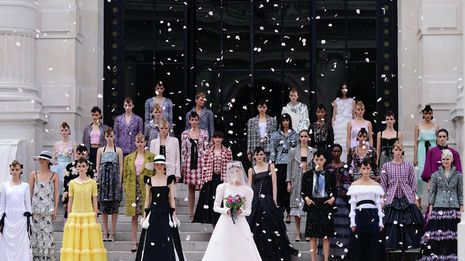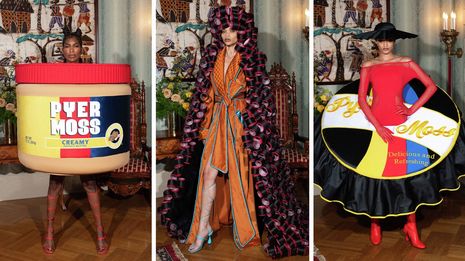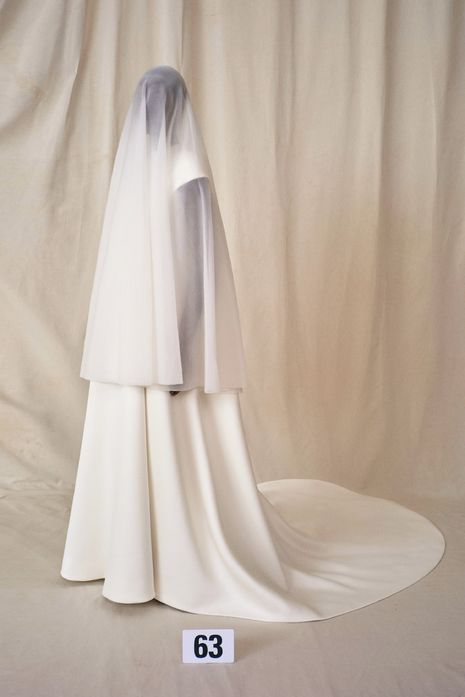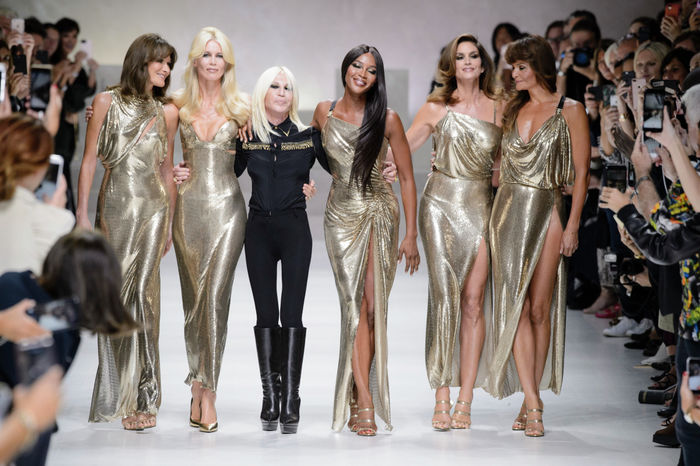In Defence Of Haute Couture
With questions being raised over the relevance of haute couture, Fashion Editor Muhammad Syed fervently comes to its defence even in a pandemic-ridden world

Twice a year, Paris becomes home to the ruling class. Private jets are parked in Charles De Gaulle carrying passengers who you have never heard of with bank accounts you could never dream of. Their Bentleys and Rolls Royce usher them to the Plaza Athénée – just a stone’s throw away from the Champs-Élysées – marking the beginning of Haute Couture fashion week.
While the term haute couture has been carelessly thrown around, the title of couturier can only be awarded by the Chambre Syndicale de la Haute Couture. Fashion tradition dictates that designers must present collections with a minimum of fifty designs biannually in an atelier. These workshops consist of twenty technical workers who produce the clothes by hand (or in the case of Iris van Herpen, by 3D printing). Each house must also produce made-to-order pieces that typically come with a hefty price tag which can easily run into six-figures.
“Has one deadly virus made couture a relic from a bygone era, a symbol of grandeur that no longer commands an audience?”
“Couture is exclusive because it is unique” declares Vogue. It epitomises opulence and frivolity that can only be accessed through excessive wealth. So as the world continues to grapple with the throes of the pandemic, is this the death of couture? Has one deadly virus made couture a relic from a bygone era, a symbol of grandeur that no longer commands an audience?
These are questions Vanessa Friedman, Fashion Director at the New York Times, regularly receives. Her answer is simple. Haute Couture has withstood the Great Recession, world wars, the rise of streetwear. Its enduring relevance persists because couture is an insight into “what’s going on in the world” and the issues they raise are indicative of the sign of the times. She turns to Karl Lagerfeld dressing his acclaimed Chanel Bride in a pair of trousers, rather than the traditional gown, as a reflection of the current female identity, along with Claire Weight Keller’s reference to military coats in the Givenchy show.
Admittedly, I too struggle with accepting her examples. A model in a pantsuit or an armour-like dress walking down a runway hardly screams ‘vive la révolutione’. But this should not take away from Friedman’s overarching proposition. Her primary defence suggests that even the hallowed realm of haute couture is not exempt from change. It must shift, reconfigure and adapt to meet the demands of the current climate, even if that means foregoing the exclusivity it built its walls upon. The recent series of collections and the subsequent media frenzy it inspired was a testament to the relevance of couture. It is still very much alive.

Take Kerby-Jean Raymond’s collection last month for Pyer Moss. As the first African American to be accepted by the Chambre Syndicale, Jean-Raymond recognised the significance of his debut. So he rewrote all the rules. His show was a homage to Black America, with models walking down in quite literal interpretations of inventions made by African-Americans set against the backdrop of CJ Walker’s mansion, the former home of America’s first self-made female millionaire.
The “gatekeepers of couture” have also opened their sacred gates to designers from across the world, including Lebanon and China in recent years. This speaks to a larger point on the dominating Asian market that brands have tried to capture in recent years. As couture’s clientele expands beyond the Babe Paleys and Grace Kellys of the 21st century, the fashion world has officially recognised the economic prowess of the East á la the ‘Crazy Rich Asians’ phenomenon. Malaysian heiresses and Shanghai socialites are often spotted front row cosying up to the likes of Hollywood stars and European royalty.
“It was the escapist fantasy the fashion world desperately craved after more than a year of coping with the pandemic, even moving some to tears”
However, if there was in fact a rumour that the digital age combined with the pandemic had rung the death knell of couture, it is one that never reached the ears of Pierpaolo Piccioli. His collection for Valentino was incorporated into the Venice Biennale, upping the production value of his show by creating a runway that appeared to float on water. According to Hamish Bowles, all guests were asked to wear white to accentuate the bold sea of colours that are customary of Piccioli’s shows. It was the escapist fantasy the fashion world desperately craved after more than a year of coping with the pandemic, even moving some to tears. To Valentino enthusiasts, sweet dreams are apparently made of couture.
A couple days prior to the Valentino show marked the important return of two of fashion's greatest names to the couture circuit. The new vanguard of couturiers – Pieter Mulier for Alaïa and Demna Gvasalia for Balenciaga – were born, expertly marrying the rich history of their respective legendary houses with the effervescence and youthful vigour of the present. But the timing of both their returns raised questions. Why revive haute couture in a post-pandemic world?

In an interview with i-D, Gvasalia explained that the pandemic forced him to reconnect with himself, to reconsider the purpose of fashion. His ruminations resulted in an epiphany. “Fashion is not about the whole frenzy, the white noise, and the whole digital mayhem we’re living through. Clothes are the essence of it, my passion, and couture is the best platform for that. This is actually what I'm really into. It’s what turns me on.”
And it seemed Balenciaga’s return turned on the rest of the fashion world as well. The reviews were triumphant. Critics hailed his show as magnificent, praising Gvasalia for resetting the narrative of couture with his powerful silhouettes and impeccable tailoring. His motivations for reviving couture reveals the ultimate justification for it, the pièce de résistance of all defences.
Couture is fundamentally about clothes, a blank canvas for designers to create art. Where commercial fashion forces designers to pander to trend forecasts and considerations of wearability, couture is the antithesis. It allows for time, patience and unrestrained creativity, free from the shackles of commercialisation. Designers can test the limits of what constitutes fashion, who can wear it, and what it should represent. To discontinue haute couture is to bid farewell to fashion’s purest art form along with the artistic freedom that comes with it.
 News / Local business in trademark battle with Uni over use of ‘Cambridge’17 January 2026
News / Local business in trademark battle with Uni over use of ‘Cambridge’17 January 2026 News / Cambridge bus strikes continue into new year16 January 2026
News / Cambridge bus strikes continue into new year16 January 2026 Comment / Fine, you’re more stressed than I am – you win?18 January 2026
Comment / Fine, you’re more stressed than I am – you win?18 January 2026 News / News in Brief: cosmic connections, celebrity chefs, and ice-cold competition18 January 2026
News / News in Brief: cosmic connections, celebrity chefs, and ice-cold competition18 January 2026 Film & TV / Anticipating Christopher Nolan’s The Odyssey17 January 2026
Film & TV / Anticipating Christopher Nolan’s The Odyssey17 January 2026










